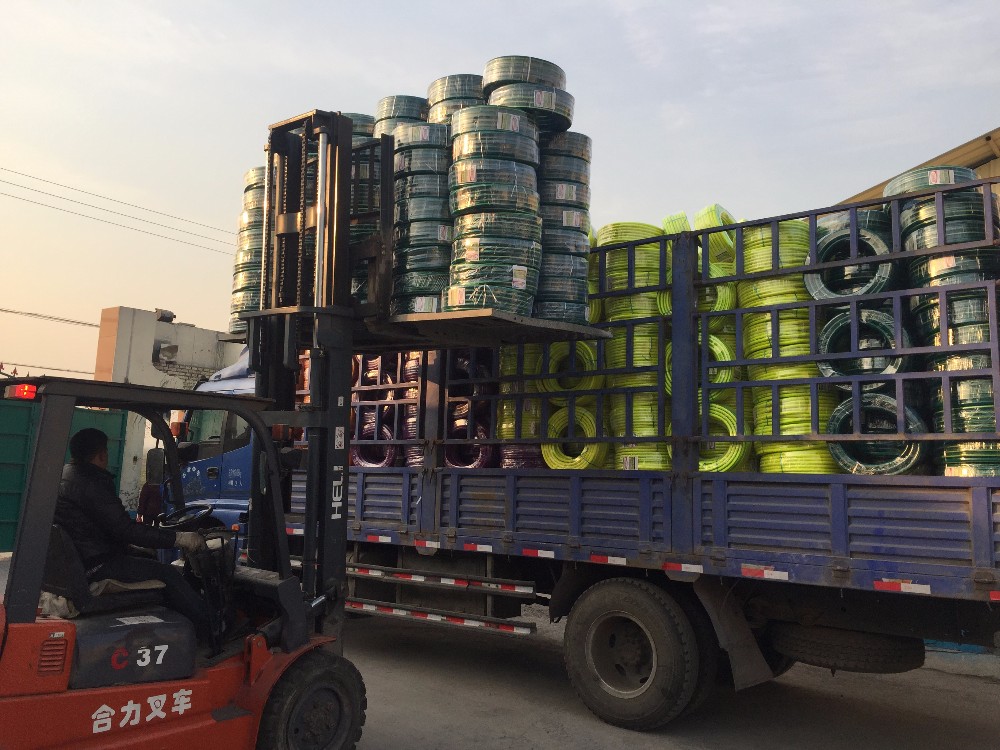pvc vs rubber vs polyurethane air hose
PVC vs Rubber vs Polyurethane Air Hose A Comprehensive Comparison
When it comes to air hoses, choosing the right material is crucial for achieving optimal performance in various applications. The three most commonly used materials for air hoses are PVC (Polyvinyl Chloride), rubber, and polyurethane. Each material has its own unique properties, advantages, and disadvantages. In this article, we will explore these three types of air hoses, comparing their features to help you make an informed decision based on your specific needs.
PVC Air Hoses
PVC air hoses are popular for their lightweight and flexibility, making them easy to handle and transport. They are often used in less demanding environments such as light-duty home and garden applications, as well as crafts and hobby projects.
Advantages of PVC Air Hoses - Cost-Effective PVC hoses are generally less expensive than rubber or polyurethane hoses, making them an attractive option for budget-conscious consumers. - Lightweight and Flexible Their lightweight nature allows for easy maneuverability, while their flexibility makes them suitable for tight spaces. - Chemical Resistance PVC is resistant to certain chemicals, making these hoses suitable for applications involving mild solvents and abrasives.
Disadvantages of PVC Air Hoses - Temperature Sensitivity PVC hoses can become brittle in extremely cold temperatures, which may lead to cracking or breaking. - Limited Durability While suitable for light-duty use, PVC hoses may not hold up well in high-pressure applications or heavy industrial environments. - Kinking PVC air hoses are prone to kinking, which can restrict airflow and lead to increased wear over time.
Rubber Air Hoses
Rubber air hoses are celebrated for their durability and resistance to wear and tear. They are commonly used in industrial applications and heavy-duty tasks where high pressure and extreme temperatures may be encountered.
pvc vs rubber vs polyurethane air hose

Advantages of Rubber Air Hoses - Durability Rubber hoses are known for their long lifespan and ability to withstand rough handling, making them ideal for construction sites and industrial settings. - Temperature Resistance These hoses can handle a wide range of temperatures, maintaining their flexibility even in cold or hot conditions. - Flexibility Rubber hoses are highly flexible and can bend without kinking, ensuring consistent airflow and reducing the risk of damage.
Disadvantages of Rubber Air Hoses - Weight Rubber hoses tend to be heavier than PVC or polyurethane hoses, which can make them less convenient to transport and handle. - Cost Generally, rubber hoses are more expensive than PVC options, which might not be ideal for users seeking budget solutions. - Chemical Sensitivity While resistant to many substances, rubber can degrade over time when exposed to certain chemicals or oils.
Polyurethane Air Hoses
Polyurethane (often referred to as PU) air hoses are known for their toughness and versatility. These hoses have become increasingly popular in both industrial and consumer markets due to their combination of properties.
Advantages of Polyurethane Air Hoses - Lightweight and Strong PU hoses are typically lighter than rubber hoses while maintaining high tensile strength, which makes them easier to handle without sacrificing durability. - Excellent Flexibility Polyurethane hoses remain flexible in a wide range of temperatures and can be coiled without kinking, ensuring that they maintain airflow throughout their length. - Abrasion Resistance PU hoses exhibit high resistance to abrasions and cuts, making them ideal for use in environments where exposure to rough surfaces is a concern.
Disadvantages of Polyurethane Air Hoses - Cost The advanced properties of polyurethane result in a higher price point compared to PVC options. This can be a disadvantage for users on a strict budget. - Chemical Limitations While PU offers good chemical resistance, it may not be suitable for specific aggressive chemicals, so verification is necessary for particular applications.
Conclusion
In summary, the choice between PVC, rubber, and polyurethane air hoses depends on your specific needs and applications. For budget-friendly and lightweight options for light-duty tasks, PVC hoses may be the best choice. Rubber hoses offer durability and temperature resistance for heavy-duty environments, while polyurethane hoses strike a balance between weight and toughness for a variety of applications. Understanding the strengths and weaknesses of each material will help you select the right air hose for your project, ensuring efficient performance and longevity.
-
Top Quality Oxy Acetylene Hoses for Sale Fit for Welding DemandsNewsJul.28,2025
-
The Future of Pneumatic Air Tubes in IndustryNewsJul.28,2025
-
Superior and Reliable LPG Hose Pipe Solutions for Every NeedNewsJul.28,2025
-
Exceptionally Durable and Versatile Premium Braided PVC TubingNewsJul.28,2025
-
Best Adapters for Connecting Garden Hose to PVC Pipe ConnectionsNewsJul.28,2025
-
The Essential Role of LPG Hoses in Safe and Efficient Gas DistributionNewsJul.16,2025














